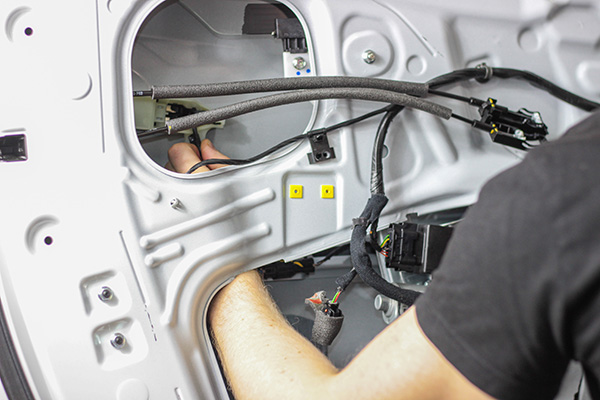
You hit the switch, expecting your power window to roll up—and suddenly, it disappears into the door with a thud. Now you're stuck with an open window, no way to close it, and possibly a jammed mechanism inside. This isn’t just inconvenient—it leaves your car exposed to weather, theft, and more damage.
A window that falls into the door usually signals a failure in the regulator, a broken cable, or a loose component inside the door panel. Thankfully, it's a fixable issue—but it’s not something you should ignore for long.
Why Power Windows Drop Into the Door
Power windows rely on a motor and regulator assembly to move the glass up and down. The regulator typically includes cables or arms that guide the window smoothly. Over time, these components wear out—especially if the window has been sticking, grinding, or moving slower than usual.
When the regulator fails or a cable snaps, the glass can suddenly lose support and drop into the bottom of the door. Sometimes, it can fall out of the track or even tilt at an angle, becoming jammed.
This issue is more common in older vehicles or those that have spent time in extreme heat or cold, where plastic and metal components become brittle or stretched.
Immediate Steps to Take
If your window has fallen inside the door, your first concern should be preventing further damage. Don’t keep trying the switch—it might burn out the motor if the glass is jammed or off-track.
Here’s what to do next:
- Carefully inspect the door to ensure no glass has shattered.
- Avoid slamming the door or driving with the window down, as vibrations could damage the regulator further.
- Cover the window opening if it’s raining or the vehicle is parked outside.
Leaving the window open for long periods will cause water damage, electrical problems, or theft. A quick repair is always the safest bet.
What a Technician Will Check
To fix the issue, the technician will remove the door panel and inspect the window mechanism. They’ll look for:
- A broken or detached window regulator
- Damaged or misaligned window tracks
- A failed power window motor
- Glass that has slipped out of its clamps or supports
If the regulator assembly has failed—which is often the case—it will need to be replaced. Many modern vehicles use a sealed regulator unit with cables, and when one part fails, the whole unit must be changed.
If the glass itself is damaged or scratched from falling, it may also need to be replaced or polished, depending on the severity.
How to Prevent Window Failures in the Future
While you can’t always predict when a regulator will break, there are a few warning signs that suggest trouble is coming:
- The window moves slower than usual or struggles to reach the top
- Grinding or clicking noises when raising or lowering the window
- The window tilts or shakes while moving
- The window won’t stay in place and slides down on its own
If you notice any of these issues, it’s smart to have the window mechanism inspected before it fails completely. Replacing a weak regulator is much easier—and often cheaper—than dealing with glass that’s fallen or jammed inside the door.
Also, avoid holding the switch too long after the window is fully up or down. That extra strain can wear out the motor and regulator faster.
Repair The Window On Time
Driving with a missing or stuck-open window isn't just annoying—it can lead to water getting into your interior, shorting out electronics, or ruining upholstery. Even a few hours of exposure to rain or debris can cause damage that’s more expensive than the original repair.
It also poses a safety risk, especially if the window falls unexpectedly while driving or you’re unable to close it in a secure area. If your power window has already fallen into the door, don’t put off the repair—you’ll avoid bigger problems by addressing it right away.
For quick, reliable power window repairs, trust the experienced team at 5 Star Auto Service in Belmont, CA, to get your glass back in place and your vehicle secure.